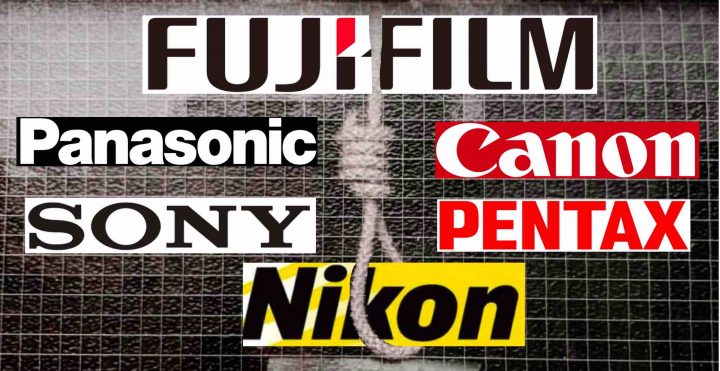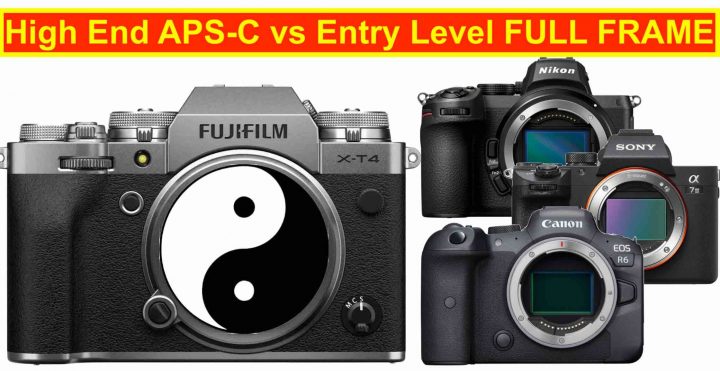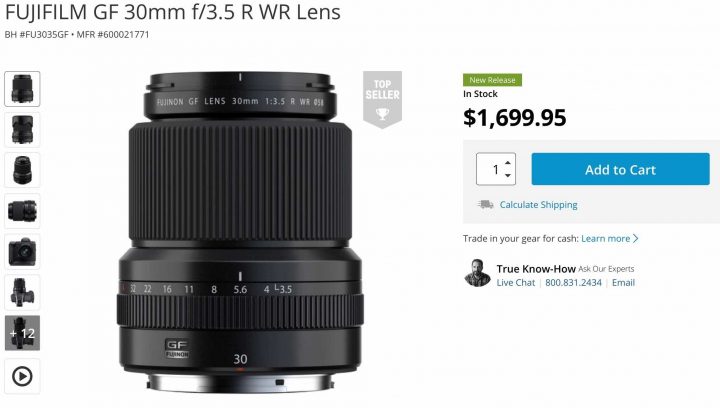Nikkei: “Japanese Camera Industry Strangles Itself. 88% Decline in 10 Years. On the Brink of Extinction, Unless…”

Triggered by recent failure of the Olympus imaging division (which FujiRumors dedicated an own – and very personal – article here), Nikkei deputy editor Masamichi Hoshi has published a rather dark overview over the current camera market situation and an even darker forecast.
The article starts by taking into account two rather obvious reasons, why the camera industry struggles, and that surely Japanese camera makers are not responsible for:
- the rise of smartphones
- COVID-19 (which lead to only 2.63 million shipments during the first four months of this year, down 44% from the same period last year)
The numbers of the decline are dramatic:
- 2010: a total of 121 million digital cameras shipped
- 2019: a total of 15 million digital cameras shipped
- … this means there was an almost 88% decrease in 10 years only!
- 2020: a total of 2.63 million digital cameras shipped in the first 4 months
A special mention in regards of struggling companies goes to Nikon, which has photography as a core business (unlike Fujifilm), but also all other brands are having hard times.
Nikon’s imaging unit, which has focused on digital cameras, finished the fiscal year that ended in March with an operating loss of 17.1 billion yen ($158.7 million), down from a profit of 22 billion yen the previous year. In November, the unit drafted a rebuilding plan focused on the “pro-hobby class,” which consumes 3 million interchangeable lenses per year. It aims to cut 50 billion yen from its fiscal 2019 operating costs by the end of fiscal 2022. The cuts will come from a reorganization of production plants, a narrowing of products and a personnel reduction.
The digital camera operations of companies like Ricoh and Panasonic also continue to struggle. The operating profit at Canon’s imaging system units fell by 48.2 billion yen in the year through December, a 62% drop the previous year.
But beyond smartphones and COVID-19, there is a third reason highlighted by Masamichi Hoshi, which is the one we want to focus on here today: excessive competition.
Here is what Masamichi Hoshi writes on Nikkei:
Meike Cinema Lenses for Fujifilm X: 25mm T2.2, 35mm T2.2, 50mm T2.2, 65mm T2.2, 85mm T2.2
You might remember the Duclos Veydra Mini Cinema Primes for Fujifilm X-Mount, launched back in 2017.
Well, Veydra went out of business in 2019, but out of that came the birth of the Meike cinema lenses. The Meike cinema primes have:
- improved coating
- improved optical and mechanical quality
- significant increase in production quantity which lowered the cost of the lenses over the Veydra version
- all cinema primes have a 77mm front thread and 80mm front diameter
- they all have the same size and aproximately the same weight
- these are dedicated true cinema lenses
The Meike cinema lenses are available for Fujifilm X mount a in:
- Meike 25mm T2.2: AmazonUS / BHphoto
- Meike 35mm T2.2: AmazonUS / BHphoto
- Meike 50mm T2.2: AmazonUS / Adorama
- Meike 65mm T2.2
- Meike 85mm T2.2
They all cover Fujifilm X series cameras in super35 2K and 4K video recording modes.
Some of the Meike Cinema lenses can be found at AmazonUS here, BHphoto here and Adorama here and all of them at revarcine.com, official US distributor for Meike Cinema Primes.
IBIS Showdown 2020: Fujifilm X-T4 vs Panasonic GH5 vs Olympus E-M1 III vs Sony A6600

IMPORTANT UPDATE: X-T4 is with older firmware and not with firmware 1.02, as imaging resource told me.
Imaging Resource has compared the IBIS performance of the following 4 cameras:
It is unclear if the Fujifilm X-T4 was used with the very recent firmware 1.02, which hugely improved IBIS performance.
Down below you can find the video and a summary of the results.
In short: while MFT cameras still are the top, the Fujifilm X-T4 holds up surprisingly well, whereas the Sony falls clearly behind all of them.
IBIS Showdown (Video + Summary)
Fujifilm APS-C is Dead? Nikon Z5, Sony A7III, Canon R6 vs the Fujifilm X Series Art of Balance

High End APS-C vs Entrly Leve Full Frame
First off let me say this:
I am a fan of competition. I want camera manufacturers to fight for customers, to work hard, to squeeze new tech into cameras as much and fast as possible for the most affordable price they can.
Hence, the more sub $2,000 full frame cameras hit the market, the more I am happy, that also Fujifilm ASP-C shooters like myself will profit from it in the long term, as this will push Fujifilm to work harder than ever.
So, I personally welcome the brand new Nikon Z5, the Sony A7III, the Canon EOS RP and also the Canon EOS R6.
But there is something I do not understand…
I blog on FujiRumors since almost a decade now, and over all these years, I have heard many times announcements of the death of the Fujifilm X series since the launch of the original Sony A7. And the same “Fujifilm APS-C is dead” voices come back today, after the announcement of the Nikon Z5.
Now, let’s look at a few facts:
- after many years of death proclamations and multiple full frame mirrorless cameras, Fujifilm X is still here
- not only “we are still here“, but even in times of COVID-19, Fujifilm is the only brand, that didn’t see a massive sales decrease (report here)
- until 2018, in terms of worldwide mirrorless market share, Fujifilm came third very close to Canon, far ahead of Olympus, Nikon and Panasonic (report here)
So here is the thing: either customers are stupid, or they see it the same way as these industry insiders (DPReview included), who claim that APS-C is the sweet spot.
To be clear: the Nikon Z5, Sony A7III, Canon EOS RP and the Canon EOS R6 are all very nice cameras.
But there is one thing, that sets Fujifilm X apart from all those “entry level” full frame cameras: it can squeeze so much tech into sub $2,000 cameras, that other brands can not.
Or, in other words: their main selling point (full frame), becomes their main limitation, since if you want to deliver full frame cameras under $2,000, you have to cut costs on other sides.
Let me explain.


